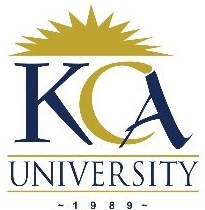
UNIVERSITY EXAMINATIONS: 2017/2018
EXAMINATION FOR THE DEGREE OF BACHELOR OF SCIENCE IN
INFORMATION TECHNOLOGY/ BACHELOR OF BUSINESS IN
INFORMATION TECHNOLOGY
BIT 2303/BBIT 305: DISTRIBUTED SYSTEMS
FULL TIME/PART TIME/DISTANCE LEARNING
DATE: AUGUST, 2018 TIME: 2 HOURS
INSTRUCTIONS: Answer Question One & ANY OTHER TWO questions.
QUESTION ONE: 30 MARKS
a) List and explain three differences between loosely coupled systems and tightly coupled
systems. Use diagrams to explain your answer. (6 Marks)
b) Explain the following forms of transparency (4 Marks)
i. Access
ii. Scalability
c) Describe any three desirable features of a message passing system. (6 Marks)
d) With the help of a diagram explain what is a middleware giving its functions.(6 Marks)
e) Describe the term dependability, explaining four requirements for dependability.
(6 Marks)
f) Explaining the meaning of the term ‘remote method invocation (RMI)’ (2 Marks)
QUESTION TWO: 20 MARKS
a) State and describe five importance of IPC (inter-process communication) (5 Marks)
b) With the help of a clearly labeled diagram, explain the elements of RPC. (8 Marks)
c) Explain the following replication approaches. (7 Marks)
i. Active replication
ii. Passive replication
QUESTION THREE (20 MARKS)
a). Briefly explain the meaning of the following terms
a) Distributed system (1 Mark)
b) Remote procedure call (1 Mark)
c) Binding (1 Mark)
b) Briefly explain any three types of middle ware models (3 Marks)
c) Describe any four characteristics of distribution system (4 Marks)
d). State and explain two concurrency problems in distributed systems (4 Marks)
e) There various design approaches that have been suggested for building dependable distributed
systems that exhibit a high level of stability and fault tolerance. Describe any three of these
approaches (3 Marks)
f) Briefly explain three categories of faults that can occur in a distributed system (3 Marks)
QUESTION FOUR (20 MARKS)
a) Using examples, explain the following terms in the context of parallel and distributed systems.
i) Mutual exclusion (2 Marks)
ii) Dependability (2 Marks)
iii) Availability (2 Marks)
iv) Dead lock (2 Marks)
b) Describe using diagrams three algorithms for achieving mutual exclusion (6 Marks)
c) Differentiate between shared and write locks as used in concurrency control (4 Marks)
c) There are various strategies of handling deadlocks. Outline any four of these strategies
d) Briefly explain what you understand by ‘file replication’ (2 Marks)
QUESTION FIVE (20 MARKS)
a) Fundamental models are concerned with description of properties that are common in all of
the architectural models. Describe three main fundamental models. (3 Marks)
b) Distributed file system typically provides three types of services. Each can be thought of as a
component of a distributed file system. State and explain each of these services (3 Marks)
b) State and explain four features of a good distributed file system (4 Marks)
c) Security goals of a any computer system are decided by its security policies. State and explain
three computer security goals that can be set in a distributed system (3 Marks)
d) There for types of security threats to consider when designing and implement any distributed
system (4 Marks)
e). Describe three techniques that can be employed to implement a scalable and fault tolerant
directory service (3 Marks)